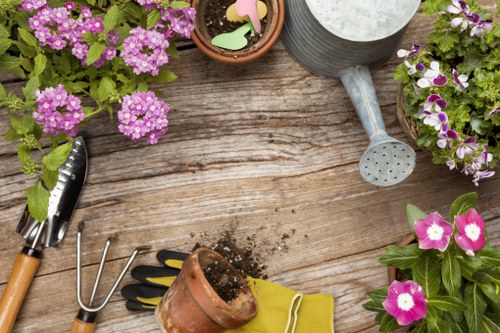Bathroom Cleaning in Spot Cleaner
Introduction to Spot Cleaning in Your Bathroom

Maintaining a spotless bathroom can often feel like a daunting task. However, with the right techniques and tools, bathroom cleaning can become a manageable and even satisfying chore. One effective method is spot cleaning, which targets specific areas that accumulate grime and dirt over time.
Spot cleaning allows you to address stubborn stains, soap scum, and other persistent messes without the need for a full-scale cleaning every time. This approach not only saves time but also reduces the use of cleaning products, making it an eco-friendly choice for environmentally conscious households.
In this article, we will explore the best practices for bathroom cleaning in spot cleaner, providing you with a comprehensive guide to keeping your bathroom sparkling clean with minimal effort.
The Importance of Regular Spot Cleaning

Regular spot cleaning in the bathroom plays a crucial role in maintaining hygiene and preventing the buildup of bacteria and mold. These microorganisms thrive in moist environments like bathrooms, making consistent cleaning essential to ensure a healthy living space.
Moreover, regular spot cleaning helps preserve the integrity of your bathroom fixtures and surfaces. By promptly addressing spills, stains, and soap residue, you can extend the lifespan of your tiles, grout, countertops, and other elements, ultimately saving on repair and replacement costs.
Additionally, a clean bathroom contributes to the overall aesthetics of your home. A well-maintained bathroom not only looks better but also enhances the comfort and satisfaction of its users, making it a more pleasant space for daily routines.
Essential Tools and Products for Spot Cleaning

Choosing the Right Cleaning Agents
Selecting appropriate cleaning products is fundamental to effective spot cleaning. Opt for non-abrasive cleaners that are specifically formulated for bathroom surfaces to avoid damage. Natural alternatives like vinegar and baking soda can be highly effective for tackling grime without harmful chemicals.
Necessary Cleaning Tools
Having the right tools at your disposal makes spot cleaning more efficient. Essential tools include microfiber cloths, soft-bristle brushes, sponges, and spray bottles. A good-quality spot cleaner with adjustable settings can also enhance precision, allowing you to focus on problem areas without affecting the entire surface.
Protective Gear
To ensure safety during cleaning, especially when using chemical cleaners, it is advisable to wear gloves and, if necessary, protective eyewear. This prevents skin irritation and protects your eyes from splashes, ensuring a safe cleaning experience.
Step-by-Step Guide to Bathroom Spot Cleaning

1. Identify the Problem Areas
Begin by assessing your bathroom to identify the areas that require spot cleaning. Common problem spots include the shower enclosure, toilet, sink, and tiled walls. Look for visible stains, soap scum buildup, and areas prone to mold and mildew.
2. Prepare Your Cleaning Solution
Mix your chosen cleaning agents according to the instructions. For natural cleaning, a solution of equal parts vinegar and water can be effective. Alternatively, use a commercial bathroom cleaner suited for your specific needs.
3. Apply the Cleaner
Spray the cleaning solution generously onto the identified areas. Allow it to sit for a few minutes to penetrate and loosen the grime, making it easier to remove during the cleaning process.
Techniques for Different Bathroom Surfaces

Cleaning Tiles and Grout
Tiles can accumulate soap scum and hard water stains over time. Use a mixture of baking soda and water to create a paste, apply it to the tiles, and scrub gently with a soft brush. For grout, a grout-specific cleaner or a bleach solution can help remove stubborn stains and disinfect the area.
Sanitizing the Toilet
The toilet is one of the most critical areas to maintain. Use a toilet bowl cleaner and a sturdy brush to scrub the bowl, paying attention to the rim and under the seat. Wipe down the exterior with disinfectant wipes or a damp cloth to eliminate germs and maintain hygiene.
Maintaining the Sink and Faucet
Regularly clean the sink and faucet to prevent water spots and mineral buildup. Use a gentle all-purpose cleaner or a mixture of vinegar and water to wipe down surfaces. For faucets, a toothbrush can help reach tight areas and remove grime effectively.
Glass Shower Doors and Mirrors
Glass surfaces can quickly become cloudy with soap residue. Use a glass cleaner or a vinegar-water solution to spray and wipe down shower doors and mirrors. For stubborn spots, use a razor blade scraper carefully to avoid scratching the glass.
Preventive Measures to Reduce the Need for Spot Cleaning
Ventilation and Humidity Control
Proper ventilation is essential in preventing mold and mildew growth. Ensure your bathroom is well-ventilated by using exhaust fans or keeping windows open during and after showers. Controlling humidity levels helps keep surfaces dry and reduces the likelihood of grime buildup.
Regular Maintenance Routine
Establishing a regular cleaning schedule can significantly minimize the need for intensive spot cleaning. Small, consistent cleaning efforts prevent dirt and stains from becoming challenging to remove, making overall maintenance easier and more efficient.
Use of Protective Barriers
Applying protective barriers like shower liners or mats can help catch drips and spills, reducing the accumulation of water and soap residue on surfaces. This proactive step helps maintain cleanliness and extends the time between necessary cleanings.
Eco-Friendly Spot Cleaning Solutions
Natural Cleaners
Opting for natural cleaning agents is not only better for the environment but also safer for your health. Ingredients like vinegar, baking soda, and lemon juice are powerful cleaners that can tackle a variety of bathroom messes without the use of harsh chemicals.
Reusable Cleaning Tools
Investing in reusable cleaning tools such as microfiber cloths and scrub brushes reduces waste and promotes sustainability. These tools are effective in capturing dirt and can be washed and reused multiple times, making them an eco-friendly alternative to disposable products.
Biodegradable Cleaners
Selecting biodegradable cleaners ensures that your cleaning routine has a minimal impact on the environment. These products break down naturally, reducing pollution and the overall ecological footprint of your household cleaning activities.
Advanced Spot Cleaning Techniques
Steam Cleaning
Steam cleaning is an advanced method that uses high-temperature steam to sanitize and clean surfaces without the need for chemical cleaners. This technique is particularly effective for killing bacteria, mold, and removing tough stains, making it a hygienic and efficient cleaning option.
Ozone Cleaning
Ozone cleaning involves using ozone generators to eliminate odors and disinfect bathroom spaces. Ozone is a potent oxidizer that can break down organic contaminants, providing a thorough cleaning solution that leaves your bathroom fresh and germ-free.
Ultrasonic Cleaning
Ultrasonic cleaning utilizes high-frequency sound waves to remove dirt and grime from surfaces. This technique is gentle yet effective, making it suitable for delicate bathroom fixtures and intricate areas that are hard to reach with traditional cleaning methods.
Dealing with Specific Bathroom Issues
Hard Water Stains
Hard water stains can leave unsightly marks on tiles, glass, and fixtures. To combat this, use a mixture of vinegar and baking soda applied directly to the stains. Let it sit for a few minutes before scrubbing with a soft brush to lift the deposits effectively.
Mold and Mildew Removal
Mold and mildew thrive in damp environments and can pose health risks. Use a bleach-water solution or a dedicated mold cleaner to thoroughly scrub affected areas. Ensure proper ventilation during and after the cleaning process to prevent recurrence.
Soap Scum Buildup
Soap scum can make surfaces look dull and dirty. To remove it, apply a solution of vinegar and dish soap, let it sit for several minutes, and then scrub with a sponge or brush. Regular maintenance can prevent soap scum from accumulating in the first place.
Tips for Efficient Spot Cleaning
Work from Top to Bottom
When spot cleaning, start from the top of the bathroom and work your way down. This method ensures that any dirt or cleaning solution that drips down doesn't dirty areas you've already cleaned.
Use the Right Tools for the Job
Having specialized tools for different tasks can greatly enhance your cleaning efficiency. For example, use a squeegee for glass surfaces, a grout brush for tiles, and a toilet brush for the bowl to achieve the best results with minimal effort.
Stay Consistent
Consistency is key to maintaining a clean bathroom. Regular spot cleaning prevents the buildup of grime and reduces the time and effort needed for each cleaning session, making the process less overwhelming.
Conclusion
Spot cleaning is an effective strategy for maintaining a clean and hygienic bathroom without the need for exhaustive cleaning sessions. By focusing on problem areas, using the right tools and products, and incorporating preventive measures, you can keep your bathroom looking pristine with minimal effort.
Implementing the techniques and tips outlined in this guide will not only enhance the cleanliness and appearance of your bathroom but also contribute to a healthier living environment. Remember, a little regular maintenance goes a long way in preserving the beauty and functionality of your bathroom.
Contact us today to learn more about our specialized bathroom cleaning services and how we can help you maintain a spotless and inviting bathroom space.